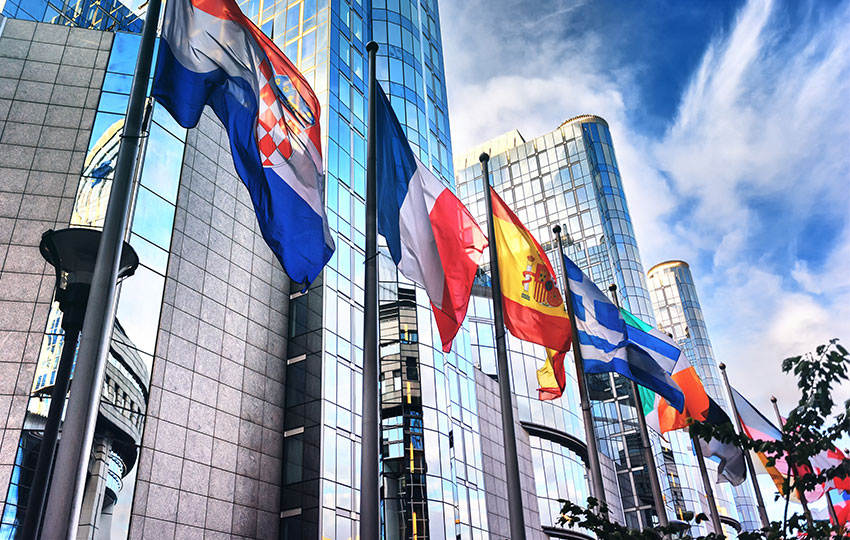In our time, people in Europe have the benefit of living under a single market and a single currency. They have the ability to travel from one country to the other without worrying about borders and internal mobility. All of that is possible due to the legislation appointed by the EU and European citizens could never imagine living without all of these and many more benefits.
However, the EU needs precious data that will help them shape the legislation and policies that make Europe a good place to live. That data is collected by a network of specialists, in many fields, that has been set up by the European Parliament and the Council of the European Union.
Those specialists are responsible to carry out specific legal, technical and scientific tasks as part of the important components for the EU. Their job is to work alongside the main European institutions and the Member States and provide them with the evidence-based advice needed to help shape the informed policies and laws both under national and European level.
There are many respected and well-known agencies around Europe and around the world. With this series of articles, we will attempt to provide you with the most important information about every single one of them with the official information provided by the EU and the agency profiles.
1) AGENCY FOR THE COOPERATION OF ENERGY REGULATION (ACER)
ACER works towards completing a competitive, sustainable, secure and transparent internal energy market for the benefit of all EU consumers. Its mission is to assist national energy regulatory authorities to perform their duties at the EU level and to coordinate their actions whenever necessary.
It cooperates with EU institutions and stakeholders, notably national authorities and European Networks of Transmission System Operators, to deliver instruments for the completion of the single EU energy market. ACER supports the development of a common energy market and network rules. It also contributes to the development of trans-European energy infrastructure and monitors EU energy markets and wholesale energy trading.
On top of setting a framework for common rules in Europe’s energy markets, ACER highlights issues affecting the everyday lives of EU citizens. For example, in gas and electricity retail markets, ACER has identified persistent barriers in many national markets, which hamper retail competition and consumer choice. This includes low supplier switching rates of around 5% for electricity and gas. In addition, despite the economic downturn, consumer prices for electricity and gas, which are still often regulated, have risen in most Member States in the last few years by 4%.
The agency was established in 2011 and it is located in Ljubljana, Slovenia.
2) CLEAN SKY JOINT UNDERTAKING (CLEAN SKY)
Clean Sky aims to drastically reduce the environmental impact of aviation by developing cutting-edge technologies by 2020. This includes: halving external noise and CO2 emissions by significantly cutting fuel consumption; an 80% reduction of nitrogen oxide emissions; and ensuring a green product lifecycle from design and manufacturing to maintenance and disposal/recycling.
Clean Sky is a public-private partnership between the European Commission and Europe’s aeronautics industry. It brings together aeronautical leaders, SMEs, universities and research organizations to develop and deliver the aircraft technologies of the future. Close to 40% of the beneficiaries of Clean Sky funding in October 2013 were European SMEs, thereby contributing to growth and jobs in the European research and innovation sector.
Clean Sky has been an unambiguous success story and has led to the launch of the more ambitious Clean Sky 2 Programme with a total budget of nearly €4 billion. It aims to achieve a higher level of technology integration and to raise the maturity of systems incorporating these new technologies. It will be the largest and most ambitious aeronautical research and development programme ever launched in Europe, a clear demonstration of Clean Sky’s added value.
The agency was established in 2009 and it is located in Brussels, Belgium.
3) COMMUNITY PLANT VARIETY OFFICE (CPVO)
The CPVO fosters innovation in the creation of plant varieties by its high-quality processing of applications for EU plant variety rights at affordable costs. It manages the EU’s plant variety rights system. It provides intellectual property rights for breeders of new plant varieties for 25-30 years. It also provides policy guidance and assistance in the exercise of these rights for its stakeholders.
The EU plant variety rights system is the biggest of its kind in the world, with over 50,000 applications processed since 1995. Over 39,000 Community plant variety rights have been granted. In addition, the CPVO is self-financing with no EU funding, as applicants pay for all agency running costs.
Previously, breeders had to submit applications in the relevant language to each EU Member State and pay fees in each country. Thanks to the CPVO, one application in any official EU language gives an intellectual property right valid throughout the 28 Member States. The simplified administrative process and lower overall fees have proven to be very attractive for breeders. The exclusive right enables breeders to collect royalties to reinvest in creating new varieties which benefit growers and the public alike.
The agency was established in 1995 and is located in Angers, France.
4) EUROPEAN AGENCY FOR SAFETY AND HEALTH AT WORK (EU-OSHA)
EU-OSHA’s mission is to help make Europe’s workplaces safer, healthier and more productive.
Every year more than 4,000 workers die due to accidents at work and more than three million workers are victims of a serious accident at work. Meanwhile, 25% of workers declare that work has a mainly negative effect on their health. The costs to workers, businesses and EU Member States are estimated at around 3 % of GDP.
More than ever, occupational safety and health (OSH) is an important and challenging policy area. As new risks and areas of work emerge, demographics change and Europe responds to the economic crisis, the need for good OSH — which protects workers and makes businesses more profitable — is urgent and growing.
Working with governments, employee representatives and businesses small and large, EU-OSHA takes a joined-up approach to promote OSH across Europe.
Through its Foresight activities, it anticipates change and new and emerging risks. Instruments such as its ESENER enterprise survey provide an accurate and comprehensive picture of current OSH risks. At the same time, the agency is developing tools for good OSH management, such as OiRA (Online interactive Risk Assessment).
Meanwhile, EU-OSHA’s Healthy Workplaces awareness-raising campaigns are now the largest of their kind in the world. And its OSHwiki online encyclopedia offers a new approach to networking knowledge.
The agency was established in 1994 and is located in Bilbao, Spain.
5) EUROPEAN ASYLUM SUPPORT OFFICE (EASO)
EASO contributes to the coherent implementation of the EU’s common European asylum system. It facilitates, coordinates and strengthens practical cooperation among the Member States on asylum issues. It offers practical, technical and operational support including evidence-based input for EU policy-making and legislation. EASO is a center of expertise on asylum.
EASO helps improve the quality of the asylum process through harmonized training and information on countries where asylum seekers originate. Such information is essential for officials during the asylum determination process. In 2013, it trained over 2,100 asylum officials.
It also provides tailor-made assistance, supports capacity building and relocation, and develops quality control tools. It offers emergency support for the Member States subject to particular pressures by providing temporary support and assistance to repair or rebuild asylum and reception systems. For example, Greece, Luxembourg, Sweden, Italy, Bulgaria, and Cyprus received EASO’s operational support.
It shares information and data, analyses and assessments at EU level. For example, EASO’s early warning and preparedness system regularly provide a regional outlook and analysis of asylum trends and push-pull factors, as well as risk scenarios.
EASO also supports the external dimension of Europe’s asylum system, through partnerships with third countries to reach common solutions. This includes capacity building, regional protection programs, and coordinating Member States’ resettlement actions.
The agency was established in 2019 and is located in Valletta, Malta.
Starting of with these five agencies we aim to continue this series of articles for our reader, hoping to give you all the right information and answer your questions regarding the European Agencies. Stay tuned for more!
Read also Learn about the EU agencies across Europe - Part 2


